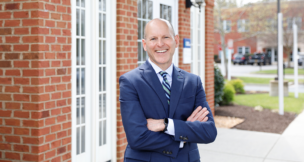Completed home sales decrease in Feb. for NoVa, Hampton Roads
Housing sales in February decreased year-over-year in Northern Virginia and Hampton Roads. Inventory and median selling prices increased in both regions. Northern Virginia Closed sales in Northern Virginia decreased year-over-year in February, according to Northern Virginia Association of Realtors data released March 11. The median home price and active listings rose compared to the same […[...]
Average US rate on a 30-year mortgage edges higher, ending a seven-week slide
The average rate on a 30-year mortgage in the U.S. edged higher this week, ending a seven-week slide that helped ease borrowing costs for home shoppers just in time for the spring homebuying season. The average rate rose to 6.65% from 6.63% last week, mortgage buyer Freddie Mac said Thursday, March 13. A year ago, […]
Real Estate and Construction: Stagnant with some silver linings
Realtors slogged through another sluggish market in 2024. Pollyanna types will point out that the commonwealth did see 4,000 more home sales in 2024 than in the previous year, according to Virginia Realtors data. On the other hand, the 102,509 homes that sold in Virginia in 2024 were down 18.8% from 2019 sales. Mortgage rates remained […]
Reports of NoVa housing market’s demise are greatly exaggerated, experts say
“See the rats run,” a Facebook post put up Saturday reads. It’s illustrated with a map purportedly of Arlington County — a map covered with dozens of ovals indicating where houses are on the market. Many of the ovals are labeled “coming soon” or “new.” In the wake of President Donald Trump and Elon Musk’s […]
Jan. housing inventory, prices increase in NoVa, Hampton Roads
Housing sales last month increased year-over-year in Northern Virginia but dropped in Hampton Roads, although inventory and sales prices rose in both regions. Northern Virginia Home sales, prices and inventory in Northern Virginia rose year-over-year in January, according to Northern Virginia Association of Realtors data released Tuesday. Last month, 833 homes sold in Northern Virginia, […]
Trump 2.0: Making real estate great again?
Let Trump be Trump. A campaign staffer’s now-famous motto during President Donald Trump’s 2016 bid for president nods to the mercurial nature of the real estate mogul and former reality television star — as well as a similar slogan from “The West Wing.” And Trump himself has repeatedly said he trusts his gut over his […]
2024 Va. housing market outpaced 2023 — barely
There were 102,509 home sales in Virginia in 2024. That’s 4,000 more than the previous year, according to Virginia Realtors. “While Virginia’s 2024 housing market ended stronger than 2023, it was still relatively slow compared to average levels,” Ryan Price, chief economist for the trade organization, said in a statement. “Looking ahead to 2025, we predict pent-up […[...]
Virginia Realtors has a new CEO
Rick Lugg is Virginia Realtors‘ new CEO, effective immediately, the trade organization announced Friday. The association’s longtime chief financial officer and chief operating officer, Lugg replaces Terrie Suit, who retired last fall. Martin K. Johnson, Virginia Realtors’ chief external affairs officer, served as interim CEO. Glen Allen-based Virginia Realtors represents nearly 3[...]
Here’s NVAR’s prediction for 2025 NoVa housing market
The Northern Virginia housing market will continue to strengthen in 2025, with moderate price increases and increased market activity, according to the Northern Virginia Association of Realtors‘ 2025 regional housing market forecast, produced with George Mason University’s Center for Regional Analysis. Examining the past year, Terry Clower, director of the Center for Regional Analysis [...]
Statewide home sales, inventories rose in November
The fall 2024 housing market has outpaced the fall 2023 market across the commonwealth, according to statewide November sales data released Dec. 20 by Virginia Realtors. “For two months in a row now, Virginia has seen double-digit growth in closed sales,” Ryan Price, the trade organization’s chief economist, stated in a news release. In November, […]
NoVa, Hampton Roads housing markets improve in November
The Northern Virginia and Hampton Roads housing markets in November showed signs of improvement from the same month last year, including increased home sales and selling prices. Northern Virginia Home prices and sales activity in Northern Virginia rose year-over-year last month, indicating a healthier market than the November 2023 one. November housing sales in Northern […]
Va. home sales, inventory rises in October
Housing sales and inventory in Virginia rose in October, with closed sales up 12.5% from October 2023, according to Virginia Realtors data released Nov. 22. Last month, 8,732 homes sold in Virginia — 968 more than sold in October 2023. The influx of closed sales in October resulted from the jump in pending sales — […]






















